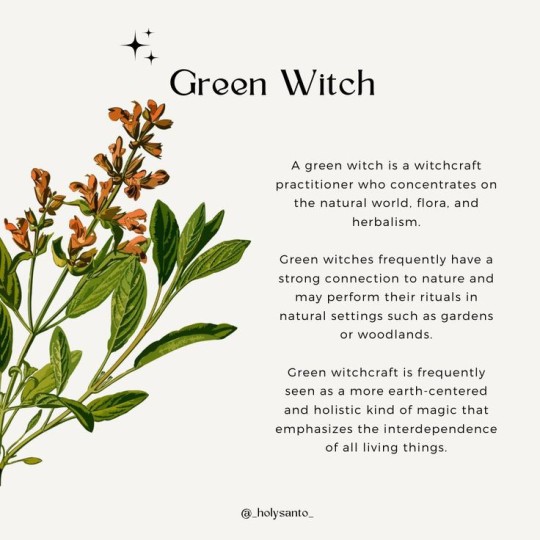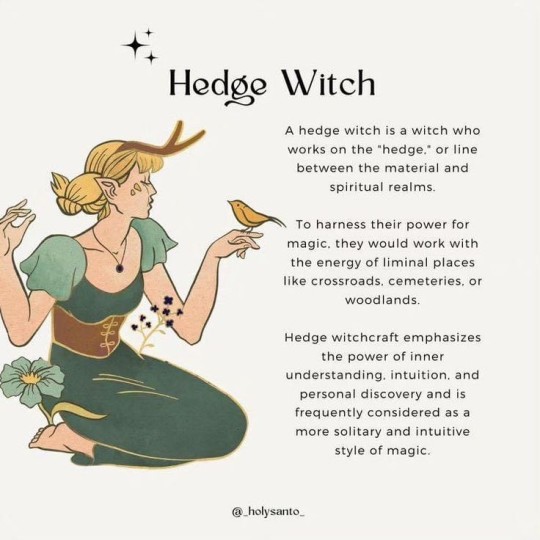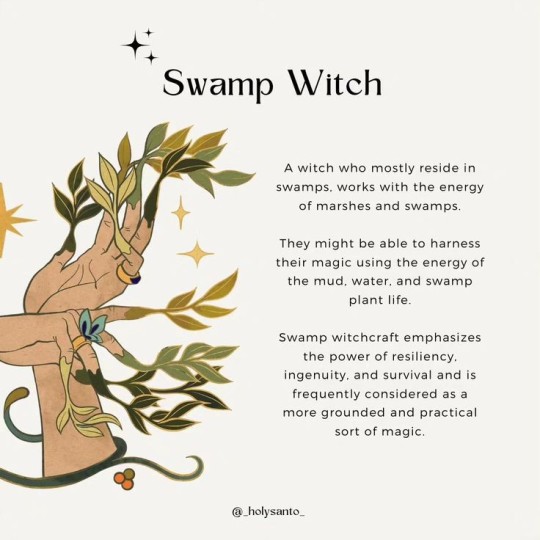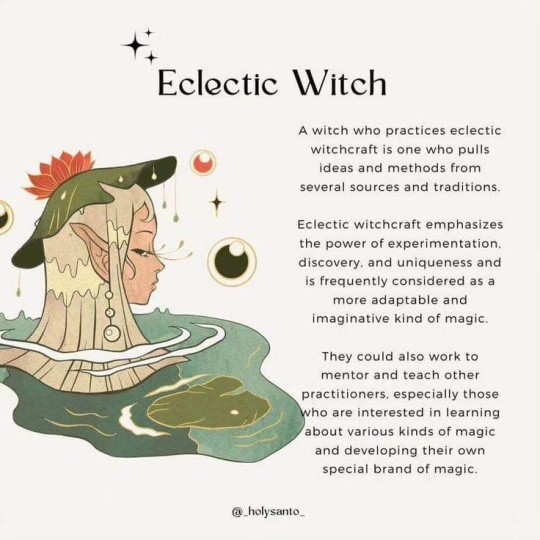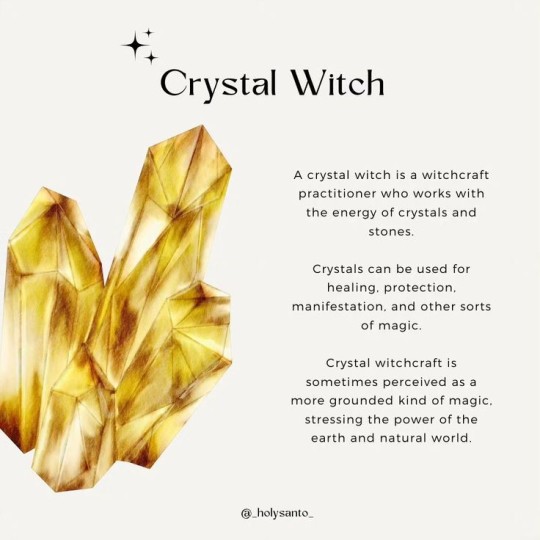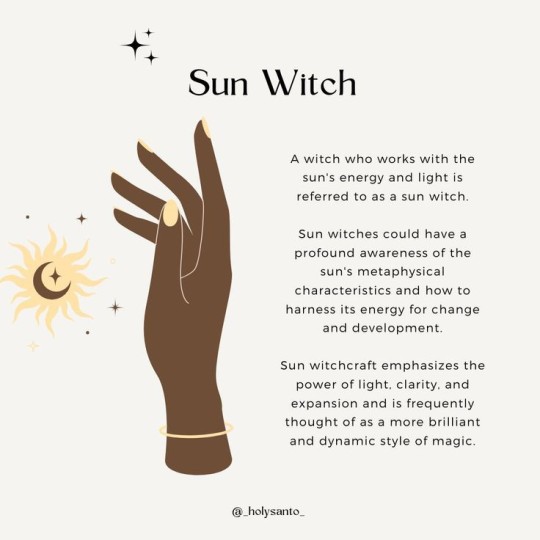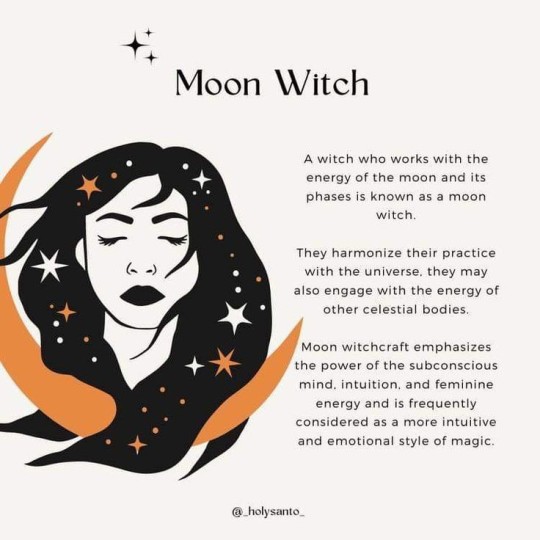If you want the ultimate advice for creating fiction stories, follow my blog TheWriteAdviceForWriters. Welcome to my writing corner, where i post whatever i want, more so my work. Like short stories, prompts, and anything else that interests me.
Don't wanna be here? Send us removal request.
Text
Prompt Submission From Followers #5
Your writing is really impressive. I absolutely love the suspense you created and the way you phrased your sentences. Your writing style is very thrilling and I truly appreciate it. I found it really fascinating when the door was blocked off by a brick wall and then a voice suddenly comes from behind your character. It was so ominous yet so captivating. Great job! Thank you for the beautifully written submission.
My Email: [email protected]
Follow the creator of this submission, all credit to them: @darkeneddiary

“Your character stumbles upon a hidden door in their favorite place. When they open it, they find something completely unexpected.”
Submission:
The chill of the night air brushed against her bare arms, causing a shiver to course down her spine. She stirred in her sleep. Her eyes fluttered open, blinking away the remnants of sleep. She looked around. "Oh, no. Did I fall asleep in here again?" There was no one else there, so she quickly decided she should leave too. She got up from her desk and started collecting her stuff. Her pencil case suddenly fell from her hand to the floor. The dim light in the library barely illuminated the space, the single bulb hanging above her head casting weak, flickering shadows. Though it was night, the feeble glow struggled to reach the floor, making it difficult for her to see even her own feet. She bent down to pick up her pencil case, straining her eyes in the darkness. After a moment, she finally grasped it. As she was about to stand up, she felt a tingling sensation on her arms, as if something or someone had touched her softly. Glancing around, she saw no one. She got up quickly but, as she zipped her bag, a sense of someone standing behind her grew stronger. She felt hot breath on her neck, which paradoxically made her feel even colder. She slowly turned around and found no one again. Her veins pulsed, and her breathing became ragged. Without thinking much, she quickly grabbed her bag and ran toward the exit. When she reached the door, it was closed, heightening her fear. "Why isn't the librarian here? Isn't he supposed to stay until everyone leaves?" she muttered, panic rising in her voice. She started banging on the door, her hands growing sweaty and her legs shaky. Desperately, she tried the handle, and to her surprise, the locked door opened. She pulled it with all her strength, but what she saw next caused a sob left her throat. Instead of an exit, there was a... brick wall. She stumbled back in shock. Then, she heard a slight movement behind her and a soft voice whisper, "You can't run, Zephyr."
If you'd like to submit your writing to my prompt, please fill out the short and easy Google Form below.
“Your character stumbles upon a hidden door in their favorite place. When they open it, they find something completely unexpected.”
Feel free to interpret this prompt in any way that inspires you! Here are a few guidelines:
Keep it short and sweet: Aim for 100-200 words.
Be creative: The more imaginative, the better!
Share your story: Post your response in the Google Form below.
I can’t wait to see what unexpected encounters your characters will have. Happy writing! 🌟
Upload Your Submission Here!
8 notes
·
View notes
Note
I have a really big issue with finding a name for my protagonist. she's from the ocean-like world where there's shore and ocean with sea creatures. please, if you have any suggestions on what names I can name her. please let me know. Also thank you for the tutorial on reedsy post!
Hello! It's totally understandable how you feel. It's always hard for me to think of good names that fit. Here are some names I found online while researching. Here are some of the best meanings associated with the names, along with their origins (hopefully accurate). Let me know if there's anything else I can assist with.
Thank you so much for your kind words about my tutorial for Reedsy book editor!
Mariana (Latin origin) - meaning "of the sea." This name is perfect for a protagonist who has a deep connection to the ocean, perhaps with a mysterious or profound nature.
Nerissa (Greek origin) - meaning "sea nymph." This name is fitting for a graceful and enchanting protagonist who embodies the beauty and allure of the sea.
Calypso (Greek origin) - meaning "she who hides." In Greek mythology, Calypso was a nymph who lived on an island. This name is suitable for a protagonist who is enigmatic, living in seclusion or hiding her true nature.
Oceana (Greek origin) - meaning "ocean." This name is ideal for a protagonist who represents the vastness, power, and depth of the ocean itself.
Neria (Hebrew origin) - meaning "candle" or "light." This name could symbolize a protagonist who brings light or hope, like a beacon guiding others through the darkness of the ocean. (Such a pretty name!)
Coralia (Greek origin) - meaning "coral." This name suits a protagonist with a vibrant and colorful personality or a strong connection to the underwater world of coral reefs.
Seldra (Old Norse origin) - meaning "sea queen." This name is appropriate for a protagonist who is a strong leader, ruling over a maritime kingdom or possessing a regal bearing.
Amphitrite (Greek origin) - meaning "third one who encircles the sea." In Greek mythology, Amphitrite was the wife of Poseidon. This name is fitting for a protagonist who is a powerful figure in the ocean realm.
Kairina (Hawaiian origin) - meaning "sea." This name is suitable for a protagonist with a strong connection to the ocean, possibly with a peaceful or calming presence.
Syrena (Latin origin) - meaning "mermaid." This name is perfect for a protagonist who embodies the grace, beauty, and mystery of mermaids. (Personal favorite!)
Thalassa (Greek origin) - meaning "sea." In Greek mythology, Thalassa was the primeval goddess of the sea. This name suits a protagonist who is ancient, wise, or all-encompassing like the sea itself.
Delphine (Greek origin) - meaning "dolphin." This name is fitting for a protagonist who is playful, intelligent, and swift like a dolphin.
Merillian (English origin) - a combination of "mer" (sea) and "lillian" (lily). This name represents a protagonist who is a delicate and beautiful flower thriving in the ocean. (Kind of made this up.)
Navissi (Latin origin) - meaning "ship." This name could represent a protagonist who is a skilled navigator or sailor, guiding others through the challenges of the ocean.
Brinamara (Celtic origin) - a combination of "brin" (sea) and "mara" (bitter). This name suits a protagonist with a complex personality, possibly with a tough exterior but a deep, emotional connection to the sea.
Hopefully these help!!!! 💜🟣^_^
-Rin T.
Hey fellow writers! I'm super excited to share that I've launched a Tumblr community. I'm inviting all of you to join my community. All you have to do is fill out this Google form, and I'll personally send you an invitation to join the Write Right Society on Tumblr! Can't wait to see your posts!
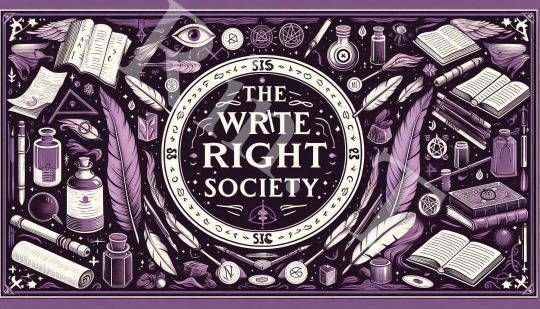
#thewriteadviceforwriters#creative writing#writer things#writers on tumblr#writeblr#writers and poets#writerscommunity#writerslife#writing
37 notes
·
View notes
Note
Synonyms for said
Here you go!
answered
articulated
blurted
broadcast
clarified
communicated
conveyed
declared
delivered
described
divulged
expressed
explained
expounded
stated
mentioned
narrated
observed
proclaimed
revealed
spoken
suggested
muttered
mumbled
shouted
yelled
whispered
hissed
squeaked
squawked
barked
croaked
chirped
sang
recited
read
reported
transmitted
uttered
voiced
Hey fellow writers! I'm super excited to share that I've launched a Tumblr community. I'm inviting all of you to join my community. All you have to do is fill out this Google form, and I'll personally send you an invitation to join the Write Right Society on Tumblr! Can't wait to see your posts!

#writeblr#thewriteadviceforwriters#writer things#creative writing#writers and poets#writers on tumblr#writerscommunity#writerslife#writing#synonyms
121 notes
·
View notes
Note
May I ask the software you use to write?
Congratulations on getting so much done!
Thank you so much. And, of course.
I use the Reedsy Book Editor for all of my writing projects, and I've been using it for about three years now. I also have experience with other amazing softwares, and I would love to create more tutorials on them if you need me to.
Here's a quick tutorial on how to use the Reedsy Book Editor.
When you visit the website, the first thing you'll come across is this page. It's a completely free writing tool with a fantastic interface. All you need to do is sign up with your Google or Facebook account.

After you've completed the sign-up process and provided some information about yourself, you will be directed to this page. Please locate the "Books" option in the website's header.

Feel free to give your book/WIP (Work in progress) a title. Remember, it's okay if it's not your final title, as you can always change it in the settings of your book later.

Once you've created it, you can take your time and when you're ready, you can click "Write.”

Once you click "Write," you'll be directed to the next page. There, you'll find your chapters, the space to write your manuscript, and a sidebar with various helpful features provided by Reedsy.

Then, you can choose any name for your chapter that feels meaningful to you.

You can also track your writing goals for your specific manuscript or book. This feature provides insights into your writing habits, such as the days you've written and the number of words you've written. You can also set a target word count goal for the manuscript, and you also have the option to set manual writing goals. Additionally, you can check the word count in your current chapter from the bottom of the widget.
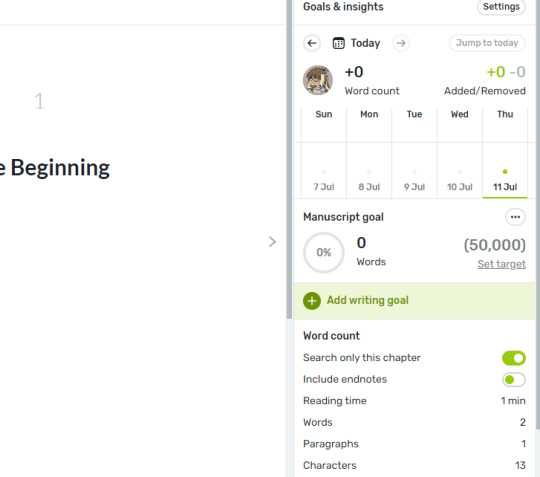
You have the option to set a deadline and choose the days that work best for you to write. This will help Reedsy estimate a realistic word count goal for you.
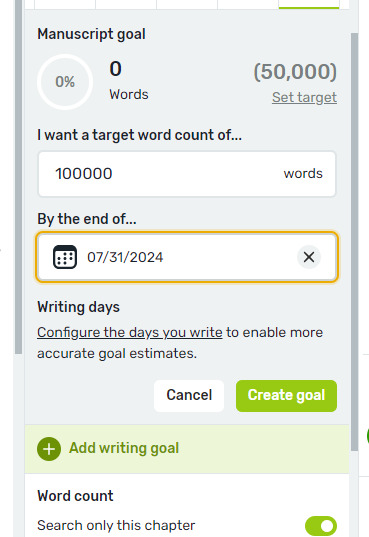
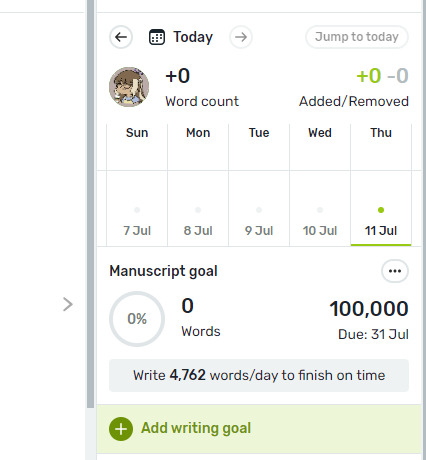
Remember that on Reedsy, there's a new beta feature that allows you to plan and outline your novel without having to leave the website. It offers note cards for you to jot down the plot and scenes from your novel, which can serve as a helpful guide and provide a simple outline to support your writing process.

Also, don’t forget the various features available to you when creating your book in Reedsy. For instance, you have the option to include preset formatted pages such as a dedication page and an epigraph that resonates with your story. These features can add a lot of value to your book, and I encourage you to explore them further.
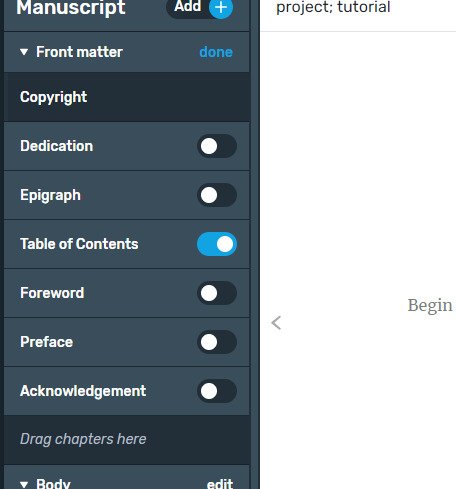
Hopefully this can help you understand the basics of Reedsy Book Editor. One of my favorite writing softwares that is completely FREE!
Hey fellow writers! I'm super excited to share that I've launched a Tumblr community. I'm inviting all of you to join my community. All you have to do is fill out this Google form, and I'll personally send you an invitation to join the Write Right Society on Tumblr! Can't wait to see your posts!
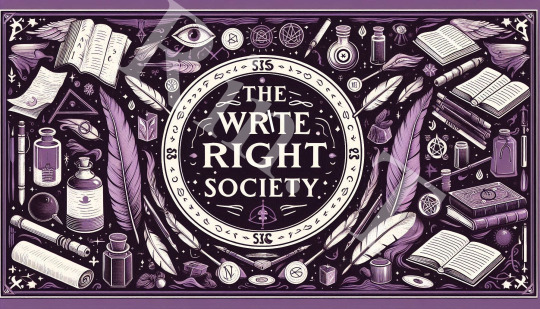
#writeblr#creative writing#thewriteadviceforwriters#writers on tumblr#writer things#writing#writing tips#on writing#writer#writer community#writing tools#writing resources#writing blog#writing advice#fiction writing#novel writing#author#book writing#publishing#indie author#fiction#reedsy#book editor#bookblr#self concept#bookworm#bookstore#books and reading#reading#book quotes
189 notes
·
View notes
Text
Rin T. Writing Chronicles!
Written over 2,000 words today! 331 words to go!!!

© 2024 Rin T.
All rights reserved
This is a work of fiction. Names, characters, businesses, places, events, locales, and incidents are either the products of the author’s imagination or used in a fictitious manner. Any resemblance to actual persons, living or dead, or actual events is purely coincidental.
11 notes
·
View notes
Text
Cobwebbed Whispers | A Short Story by Rin T.
Cobwebbed Whispers

In the ethereal silence of twilight, the cobwebbed corridors whispered tales of bygone eras within the towers of an ancient boarding school. The weight of history hung heavy upon the darkened cobblestone halls, each step echoing with the resonance of forgotten scholars.
It was in the hallowed study hall, where the musty scent of aged tomes intermingled with the faint aroma of dried ink, that Eleanor found solace amidst the enigmatic tapestries of the past. Amidst dusty volumes and flickering candlelight, she sought sanctuary from the bustling echoes of the living.
Enthralled by the romanticism of centuries past, Eleanor traced her quill upon parchment, lost in the rhythm of her thoughts. Yet, her solitude was not absolute. In the corner of the room, amidst the creeping shadows, lingered a presence not bound by the constraints of the corporeal world.
A spectral figure, a boy of enigmatic charm, haunted the study hall. His apparition, adorned in garments of a forgotten epoch, watched her with eyes that held the melancholic weight of untold stories. Whispers woven within the very fabric of the academy hinted at his tragic fate, an untimely demise that tethered him to the earthly realm.
Their encounters began as fleeting moments, the phantom's presence felt rather than seen. Yet, as time slipped like sand through an hourglass, Eleanor's heart intertwined with the ghostly boy's plight. With each passing dusk, their connection transcended the veil between the living and the departed.
Through the sepia-tinged pages of history, they forged an unlikely bond. Conversations danced between the mortal and the spectral, their words weaving a tapestry of longing and understanding. His spectral touch, though intangible, left imprints upon her soul.
In the whispers of the study hall's solitude, love blossomed between Eleanor and the boy of yesteryears. His spectral whispers held the charm of forgotten sonnets, and she, enraptured, found herself falling deeper into an affection that defied the boundaries of time and mortality.
Their love, a symphony of two souls entwined, traversed the realms of the living and the ethereal, casting shadows upon the walls that bore witness to their clandestine meetings. For in the heart of the darkness, amidst the hallowed sanctuary of knowledge, their forbidden love story etched its poignant verses into the annals of the boarding school's history.


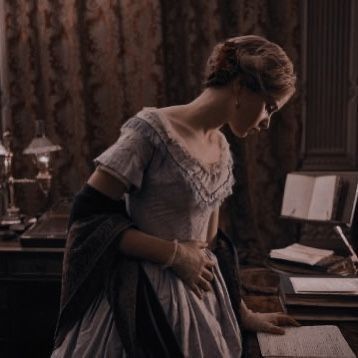
18 notes
·
View notes
Text
To whom it concerned, I wanted everyone to know that this is simply a teaster to a WIP novel I'm working on, called "Project C.W" alias as "Project Cobwebbed Whispers" I put it in the format as a short story. Let me know if you would read this if it became a published novel.
Cobwebbed Whispers | A Short Story by Rin T.
Cobwebbed Whispers

In the ethereal silence of twilight, the cobwebbed corridors whispered tales of bygone eras within the towers of an ancient boarding school. The weight of history hung heavy upon the darkened cobblestone halls, each step echoing with the resonance of forgotten scholars.
It was in the hallowed study hall, where the musty scent of aged tomes intermingled with the faint aroma of dried ink, that Eleanor found solace amidst the enigmatic tapestries of the past. Amidst dusty volumes and flickering candlelight, she sought sanctuary from the bustling echoes of the living.
Enthralled by the romanticism of centuries past, Eleanor traced her quill upon parchment, lost in the rhythm of her thoughts. Yet, her solitude was not absolute. In the corner of the room, amidst the creeping shadows, lingered a presence not bound by the constraints of the corporeal world.
A spectral figure, a boy of enigmatic charm, haunted the study hall. His apparition, adorned in garments of a forgotten epoch, watched her with eyes that held the melancholic weight of untold stories. Whispers woven within the very fabric of the academy hinted at his tragic fate, an untimely demise that tethered him to the earthly realm.
Their encounters began as fleeting moments, the phantom's presence felt rather than seen. Yet, as time slipped like sand through an hourglass, Eleanor's heart intertwined with the ghostly boy's plight. With each passing dusk, their connection transcended the veil between the living and the departed.
Through the sepia-tinged pages of history, they forged an unlikely bond. Conversations danced between the mortal and the spectral, their words weaving a tapestry of longing and understanding. His spectral touch, though intangible, left imprints upon her soul.
In the whispers of the study hall's solitude, love blossomed between Eleanor and the boy of yesteryears. His spectral whispers held the charm of forgotten sonnets, and she, enraptured, found herself falling deeper into an affection that defied the boundaries of time and mortality.
Their love, a symphony of two souls entwined, traversed the realms of the living and the ethereal, casting shadows upon the walls that bore witness to their clandestine meetings. For in the heart of the darkness, amidst the hallowed sanctuary of knowledge, their forbidden love story etched its poignant verses into the annals of the boarding school's history.



#writeblr#writers and poets#writing#writerslife#writerscommunity#writersociety#writers on tumblr#writers#short stories#victorian era#victorian
18 notes
·
View notes
Text
Cobwebbed Whispers | A Short Story by Rin T.
Cobwebbed Whispers

In the ethereal silence of twilight, the cobwebbed corridors whispered tales of bygone eras within the towers of an ancient boarding school. The weight of history hung heavy upon the darkened cobblestone halls, each step echoing with the resonance of forgotten scholars.
It was in the hallowed study hall, where the musty scent of aged tomes intermingled with the faint aroma of dried ink, that Eleanor found solace amidst the enigmatic tapestries of the past. Amidst dusty volumes and flickering candlelight, she sought sanctuary from the bustling echoes of the living.
Enthralled by the romanticism of centuries past, Eleanor traced her quill upon parchment, lost in the rhythm of her thoughts. Yet, her solitude was not absolute. In the corner of the room, amidst the creeping shadows, lingered a presence not bound by the constraints of the corporeal world.
A spectral figure, a boy of enigmatic charm, haunted the study hall. His apparition, adorned in garments of a forgotten epoch, watched her with eyes that held the melancholic weight of untold stories. Whispers woven within the very fabric of the academy hinted at his tragic fate, an untimely demise that tethered him to the earthly realm.
Their encounters began as fleeting moments, the phantom's presence felt rather than seen. Yet, as time slipped like sand through an hourglass, Eleanor's heart intertwined with the ghostly boy's plight. With each passing dusk, their connection transcended the veil between the living and the departed.
Through the sepia-tinged pages of history, they forged an unlikely bond. Conversations danced between the mortal and the spectral, their words weaving a tapestry of longing and understanding. His spectral touch, though intangible, left imprints upon her soul.
In the whispers of the study hall's solitude, love blossomed between Eleanor and the boy of yesteryears. His spectral whispers held the charm of forgotten sonnets, and she, enraptured, found herself falling deeper into an affection that defied the boundaries of time and mortality.
Their love, a symphony of two souls entwined, traversed the realms of the living and the ethereal, casting shadows upon the walls that bore witness to their clandestine meetings. For in the heart of the darkness, amidst the hallowed sanctuary of knowledge, their forbidden love story etched its poignant verses into the annals of the boarding school's history.



18 notes
·
View notes
Text
Day 6 of making spell jars for my followers.
Send me an ask and let me know what you need in your life. I’ll make you a spell jar for free :)
And please check out my etsy shop.
9 notes
·
View notes
Text
Unleash Your Inner Witch: Tips for Writing Witchcraft

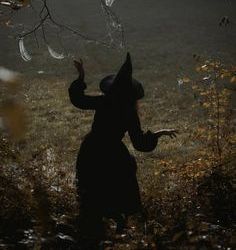
Introduction
Witchcraft has been a fascinating and mysterious topic for centuries. From the Salem witch trials to modern-day Wicca, the practice of witchcraft has evolved and endured. Whether you are a seasoned practitioner or a curious beginner, writing about witchcraft can be a powerful and transformative experience. In this blog post, I’ll help you explore tips and strategies for writing about witchcraft, including researching the history of witchcraft, developing your own unique system, selecting tools, creating spells and rituals, incorporating mythology and folklore, and writing with intention and purpose.
Explore the History of Witchcraft
Before you can write about witchcraft, it's important to understand its history and evolution. Witchcraft has been practiced in various forms throughout history, from ancient pagan traditions to medieval and common era witch-hunts. A thorough exploration of the history of witchcraft can provide context and inspiration for your writing.
One way to explore the history of witchcraft is to read books and articles on the subject. Look for works by reputable historians and scholars, such as Ronald Hutton's "The Witch: A History of Fear from Ancient Times to the Present." You can also visit museums and historical sites related to witchcraft, such as the Salem Witch Museum in Massachusetts or the Museum of Witchcraft and Magic in Cornwall, England. Google is another way to research, but the articles you find on the internet aren’t always true; it’s best to use search engines other than Google to find more truthful information.
Finally, consider connecting with other practitioners of witchcraft and participating in online communities and forums. These communities can provide valuable insights and perspectives on the history and practice of witchcraft.
Research Modern-Day Witchcraft
While the history of witchcraft is important, it's also essential to understand modern-day witchcraft. There are many different traditions and practices within the broad umbrella of witchcraft, from Wicca to Hoodoo to modern eclectic witchcraft. Researching modern-day witchcraft can help you develop your own unique system and style of writing about witchcraft. Start by exploring different books and websites on modern-day witchcraft. Look for authors and practitioners who resonate with you and your writing style. Consider attending local events and workshops related to witchcraft, such as pagan festivals or Wiccan covens. These experiences can provide valuable insights and inspiration for your writing. You don’t have to go to physical events or workshops in order to learn about witchcraft, but if you want a realistic experience and authentic knowledge on witchcraft it’s best to do so.
Remember that witchcraft is a constantly evolving and changing practice. Stay open-minded and willing to learn as you research modern-day witchcraft.
Develop Your Unique Witchcraft System
Once you have a solid understanding of the history and modern-day practices of witchcraft, it's time to develop your own unique system. This can include selecting tools and materials, creating spells and rituals, and incorporating your own personal mythology and folklore.
When selecting tools and materials, consider what resonates with you and your writing. This can include herbs, crystals, candles, and tarot cards, among others. Experiment with different tools and materials to find what works best for you.
Creating spells and rituals can be a powerful and transformative experience. Consider what intentions and desires you want to manifest through your writing, and craft spells and rituals accordingly. Remember to stay true to your own personal beliefs and values.
Finally, consider incorporating your own personal mythology and folklore into your writing. This can include family stories and traditions, personal experiences, and cultural mythology. By incorporating your own unique perspective and voice, you can create powerful and authentic writing about witchcraft.
Choose Your Witchcraft Tools
Once you have developed your unique witchcraft system, it's time to choose your tools. This can include physical tools, such as candles and crystals.
When selecting physical tools, consider what resonates with you and your writing, including whatever fits the plot of your story. This can include materials that have personal significance or symbolism, as well as tools that are practical and useful for your writing process.
Find Your Writing Software
When selecting digital tools, consider what will help you stay organized and productive. This can include writing software, such as Scrivener or Google Docs, as well as online communities and forums for feedback and support.
Remember that your tools should support your writing process and help you achieve your goals as a writer of witchcraft.
Create Spells and Rituals
Creating spells and rituals is an essential part of writing about witchcraft. These practices can help you manifest your intentions and desires, as well as connect with your own personal mythology and folklore.
When creating spells and rituals, consider what you want to achieve through your writing. This can include personal growth, healing, or manifestation of specific desires. Craft spells and rituals that are aligned with your own beliefs and values.
Remember to approach spells and rituals with intention and respect. These practices can be powerful and transformative, and should be treated accordingly.
Consider noting what spells would fit in your story, for example if you’re character wants someone to fall in love with them consider creating a love spell, make sure to have a note-taking digital software or app to help you note down everything about the spells and rituals you create. Including the incantation, the items your character needs to cast it. And anything else that has a relation with your spell(s).
Incorporate Mythology and Folklore Mythology and folklore are an important part of the history and practice of witchcraft. Incorporating these elements into your story can add depth and richness to your work.
When incorporating mythology and folklore, consider what resonates with you and your story. This can include cultural mythology, family traditions, and personal experiences. Use these elements to add authenticity and depth to your writing.
Remember to approach mythology and folklore with respect and sensitivity. These are living traditions that should be treated with care and reverence.
Write with Intention and Purpose When writing about witchcraft, it's important to approach your work with intention and purpose. This can include setting goals and intentions for your writing, as well as staying true to your own beliefs and values.
Consider what you want to achieve through your writing. This can include personal growth, healing, or sharing your experiences with others. Craft your writing with these goals in mind. Remember to stay true to your own voice and perspective. Witchcraft is a deeply personal and individual practice, and your writing should reflect this.
Practice, Revise, and Share Your Work
Like any form of writing, writing about witchcraft requires practice, revision, and sharing your work with others.
Take the time to continually research about witchcraft and the traditions, and incorporate your research into your revision process. Revise your work with intention and purpose, and seek feedback from others to help improve your writing. Don’t be afraid to get a real practitioner of witchcraft to become a beta-reader for your story. They can help you find anything offensive or misleading about witchcraft in your novel.
Finally, share your work with others. This can include submitting your writing to publications or sharing it with online communities and forums. By sharing your work, you can connect with others and inspire them to explore their own inner witch.
Conclusion
Writing about witchcraft can be a powerful and transformative experience. By exploring the history of witchcraft, researching modern-day practices, developing your own unique system, selecting tools, creating spells and rituals, incorporating mythology and folklore, writing with intention and purpose, and practicing, revising, and sharing your work, (try saying that five times.)
You can unleash your inner witch and create powerful and authentic writing about witchcraft. Remember to stay true to your own voice and perspective, and approach your writing with respect and intention.
(Note:) It’s important to note that witchcraft is a craft/practice not a religion. All Wiccans are witches and pagans, but not all individuals who practice witchcraft are wiccans or pagans.
TheWriteAdviceForWriters 2023
349 notes
·
View notes
Text
Unleash Your Inner Witch: Tips for Writing Witchcraft


Introduction
Witchcraft has been a fascinating and mysterious topic for centuries. From the Salem witch trials to modern-day Wicca, the practice of witchcraft has evolved and endured. Whether you are a seasoned practitioner or a curious beginner, writing about witchcraft can be a powerful and transformative experience. In this blog post, I’ll help you explore tips and strategies for writing about witchcraft, including researching the history of witchcraft, developing your own unique system, selecting tools, creating spells and rituals, incorporating mythology and folklore, and writing with intention and purpose.
Explore the History of Witchcraft
Before you can write about witchcraft, it's important to understand its history and evolution. Witchcraft has been practiced in various forms throughout history, from ancient pagan traditions to medieval and common era witch-hunts. A thorough exploration of the history of witchcraft can provide context and inspiration for your writing.
One way to explore the history of witchcraft is to read books and articles on the subject. Look for works by reputable historians and scholars, such as Ronald Hutton's "The Witch: A History of Fear from Ancient Times to the Present." You can also visit museums and historical sites related to witchcraft, such as the Salem Witch Museum in Massachusetts or the Museum of Witchcraft and Magic in Cornwall, England. Google is another way to research, but the articles you find on the internet aren’t always true; it’s best to use search engines other than Google to find more truthful information.
Finally, consider connecting with other practitioners of witchcraft and participating in online communities and forums. These communities can provide valuable insights and perspectives on the history and practice of witchcraft.
Research Modern-Day Witchcraft
While the history of witchcraft is important, it's also essential to understand modern-day witchcraft. There are many different traditions and practices within the broad umbrella of witchcraft, from Wicca to Hoodoo to modern eclectic witchcraft. Researching modern-day witchcraft can help you develop your own unique system and style of writing about witchcraft. Start by exploring different books and websites on modern-day witchcraft. Look for authors and practitioners who resonate with you and your writing style. Consider attending local events and workshops related to witchcraft, such as pagan festivals or Wiccan covens. These experiences can provide valuable insights and inspiration for your writing. You don’t have to go to physical events or workshops in order to learn about witchcraft, but if you want a realistic experience and authentic knowledge on witchcraft it’s best to do so.
Remember that witchcraft is a constantly evolving and changing practice. Stay open-minded and willing to learn as you research modern-day witchcraft.
Develop Your Unique Witchcraft System
Once you have a solid understanding of the history and modern-day practices of witchcraft, it's time to develop your own unique system. This can include selecting tools and materials, creating spells and rituals, and incorporating your own personal mythology and folklore.
When selecting tools and materials, consider what resonates with you and your writing. This can include herbs, crystals, candles, and tarot cards, among others. Experiment with different tools and materials to find what works best for you.
Creating spells and rituals can be a powerful and transformative experience. Consider what intentions and desires you want to manifest through your writing, and craft spells and rituals accordingly. Remember to stay true to your own personal beliefs and values.
Finally, consider incorporating your own personal mythology and folklore into your writing. This can include family stories and traditions, personal experiences, and cultural mythology. By incorporating your own unique perspective and voice, you can create powerful and authentic writing about witchcraft.
Choose Your Witchcraft Tools
Once you have developed your unique witchcraft system, it's time to choose your tools. This can include physical tools, such as candles and crystals.
When selecting physical tools, consider what resonates with you and your writing, including whatever fits the plot of your story. This can include materials that have personal significance or symbolism, as well as tools that are practical and useful for your writing process.
Find Your Writing Software
When selecting digital tools, consider what will help you stay organized and productive. This can include writing software, such as Scrivener or Google Docs, as well as online communities and forums for feedback and support.
Remember that your tools should support your writing process and help you achieve your goals as a writer of witchcraft.
Create Spells and Rituals
Creating spells and rituals is an essential part of writing about witchcraft. These practices can help you manifest your intentions and desires, as well as connect with your own personal mythology and folklore.
When creating spells and rituals, consider what you want to achieve through your writing. This can include personal growth, healing, or manifestation of specific desires. Craft spells and rituals that are aligned with your own beliefs and values.
Remember to approach spells and rituals with intention and respect. These practices can be powerful and transformative, and should be treated accordingly.
Consider noting what spells would fit in your story, for example if you’re character wants someone to fall in love with them consider creating a love spell, make sure to have a note-taking digital software or app to help you note down everything about the spells and rituals you create. Including the incantation, the items your character needs to cast it. And anything else that has a relation with your spell(s).
Incorporate Mythology and Folklore Mythology and folklore are an important part of the history and practice of witchcraft. Incorporating these elements into your story can add depth and richness to your work.
When incorporating mythology and folklore, consider what resonates with you and your story. This can include cultural mythology, family traditions, and personal experiences. Use these elements to add authenticity and depth to your writing.
Remember to approach mythology and folklore with respect and sensitivity. These are living traditions that should be treated with care and reverence.
Write with Intention and Purpose When writing about witchcraft, it's important to approach your work with intention and purpose. This can include setting goals and intentions for your writing, as well as staying true to your own beliefs and values.
Consider what you want to achieve through your writing. This can include personal growth, healing, or sharing your experiences with others. Craft your writing with these goals in mind. Remember to stay true to your own voice and perspective. Witchcraft is a deeply personal and individual practice, and your writing should reflect this.
Practice, Revise, and Share Your Work
Like any form of writing, writing about witchcraft requires practice, revision, and sharing your work with others.
Take the time to continually research about witchcraft and the traditions, and incorporate your research into your revision process. Revise your work with intention and purpose, and seek feedback from others to help improve your writing. Don’t be afraid to get a real practitioner of witchcraft to become a beta-reader for your story. They can help you find anything offensive or misleading about witchcraft in your novel.
Finally, share your work with others. This can include submitting your writing to publications or sharing it with online communities and forums. By sharing your work, you can connect with others and inspire them to explore their own inner witch.
Conclusion
Writing about witchcraft can be a powerful and transformative experience. By exploring the history of witchcraft, researching modern-day practices, developing your own unique system, selecting tools, creating spells and rituals, incorporating mythology and folklore, writing with intention and purpose, and practicing, revising, and sharing your work, (try saying that five times.)
You can unleash your inner witch and create powerful and authentic writing about witchcraft. Remember to stay true to your own voice and perspective, and approach your writing with respect and intention.
(Note:) It’s important to note that witchcraft is a craft/practice not a religion. All Wiccans are witches and pagans, but not all individuals who practice witchcraft are wiccans or pagans.
TheWriteAdviceForWriters 2023
349 notes
·
View notes
Note
synonyms for magic
sorcery
conjuring
bewitchment
wizardry
curse
jinx
hex
ensorcellment
alchemy
spell
necromany
witchery
enchantment
127 notes
·
View notes
Text
Unleash Your Inner Witch: Tips for Writing Witchcraft


Introduction
Witchcraft has been a fascinating and mysterious topic for centuries. From the Salem witch trials to modern-day Wicca, the practice of witchcraft has evolved and endured. Whether you are a seasoned practitioner or a curious beginner, writing about witchcraft can be a powerful and transformative experience. In this blog post, I’ll help you explore tips and strategies for writing about witchcraft, including researching the history of witchcraft, developing your own unique system, selecting tools, creating spells and rituals, incorporating mythology and folklore, and writing with intention and purpose.
Explore the History of Witchcraft
Before you can write about witchcraft, it's important to understand its history and evolution. Witchcraft has been practiced in various forms throughout history, from ancient pagan traditions to medieval and common era witch-hunts. A thorough exploration of the history of witchcraft can provide context and inspiration for your writing.
One way to explore the history of witchcraft is to read books and articles on the subject. Look for works by reputable historians and scholars, such as Ronald Hutton's "The Witch: A History of Fear from Ancient Times to the Present." You can also visit museums and historical sites related to witchcraft, such as the Salem Witch Museum in Massachusetts or the Museum of Witchcraft and Magic in Cornwall, England. Google is another way to research, but the articles you find on the internet aren’t always true; it’s best to use search engines other than Google to find more truthful information.
Finally, consider connecting with other practitioners of witchcraft and participating in online communities and forums. These communities can provide valuable insights and perspectives on the history and practice of witchcraft.
Research Modern-Day Witchcraft
While the history of witchcraft is important, it's also essential to understand modern-day witchcraft. There are many different traditions and practices within the broad umbrella of witchcraft, from Wicca to Hoodoo to modern eclectic witchcraft. Researching modern-day witchcraft can help you develop your own unique system and style of writing about witchcraft. Start by exploring different books and websites on modern-day witchcraft. Look for authors and practitioners who resonate with you and your writing style. Consider attending local events and workshops related to witchcraft, such as pagan festivals or Wiccan covens. These experiences can provide valuable insights and inspiration for your writing. You don’t have to go to physical events or workshops in order to learn about witchcraft, but if you want a realistic experience and authentic knowledge on witchcraft it’s best to do so.
Remember that witchcraft is a constantly evolving and changing practice. Stay open-minded and willing to learn as you research modern-day witchcraft.
Develop Your Unique Witchcraft System
Once you have a solid understanding of the history and modern-day practices of witchcraft, it's time to develop your own unique system. This can include selecting tools and materials, creating spells and rituals, and incorporating your own personal mythology and folklore.
When selecting tools and materials, consider what resonates with you and your writing. This can include herbs, crystals, candles, and tarot cards, among others. Experiment with different tools and materials to find what works best for you.
Creating spells and rituals can be a powerful and transformative experience. Consider what intentions and desires you want to manifest through your writing, and craft spells and rituals accordingly. Remember to stay true to your own personal beliefs and values.
Finally, consider incorporating your own personal mythology and folklore into your writing. This can include family stories and traditions, personal experiences, and cultural mythology. By incorporating your own unique perspective and voice, you can create powerful and authentic writing about witchcraft.
Choose Your Witchcraft Tools
Once you have developed your unique witchcraft system, it's time to choose your tools. This can include physical tools, such as candles and crystals.
When selecting physical tools, consider what resonates with you and your writing, including whatever fits the plot of your story. This can include materials that have personal significance or symbolism, as well as tools that are practical and useful for your writing process.
Find Your Writing Software
When selecting digital tools, consider what will help you stay organized and productive. This can include writing software, such as Scrivener or Google Docs, as well as online communities and forums for feedback and support.
Remember that your tools should support your writing process and help you achieve your goals as a writer of witchcraft.
Create Spells and Rituals
Creating spells and rituals is an essential part of writing about witchcraft. These practices can help you manifest your intentions and desires, as well as connect with your own personal mythology and folklore.
When creating spells and rituals, consider what you want to achieve through your writing. This can include personal growth, healing, or manifestation of specific desires. Craft spells and rituals that are aligned with your own beliefs and values.
Remember to approach spells and rituals with intention and respect. These practices can be powerful and transformative, and should be treated accordingly.
Consider noting what spells would fit in your story, for example if you’re character wants someone to fall in love with them consider creating a love spell, make sure to have a note-taking digital software or app to help you note down everything about the spells and rituals you create. Including the incantation, the items your character needs to cast it. And anything else that has a relation with your spell(s).
Incorporate Mythology and Folklore Mythology and folklore are an important part of the history and practice of witchcraft. Incorporating these elements into your story can add depth and richness to your work.
When incorporating mythology and folklore, consider what resonates with you and your story. This can include cultural mythology, family traditions, and personal experiences. Use these elements to add authenticity and depth to your writing.
Remember to approach mythology and folklore with respect and sensitivity. These are living traditions that should be treated with care and reverence.
Write with Intention and Purpose When writing about witchcraft, it's important to approach your work with intention and purpose. This can include setting goals and intentions for your writing, as well as staying true to your own beliefs and values.
Consider what you want to achieve through your writing. This can include personal growth, healing, or sharing your experiences with others. Craft your writing with these goals in mind. Remember to stay true to your own voice and perspective. Witchcraft is a deeply personal and individual practice, and your writing should reflect this.
Practice, Revise, and Share Your Work
Like any form of writing, writing about witchcraft requires practice, revision, and sharing your work with others.
Take the time to continually research about witchcraft and the traditions, and incorporate your research into your revision process. Revise your work with intention and purpose, and seek feedback from others to help improve your writing. Don’t be afraid to get a real practitioner of witchcraft to become a beta-reader for your story. They can help you find anything offensive or misleading about witchcraft in your novel.
Finally, share your work with others. This can include submitting your writing to publications or sharing it with online communities and forums. By sharing your work, you can connect with others and inspire them to explore their own inner witch.
Conclusion
Writing about witchcraft can be a powerful and transformative experience. By exploring the history of witchcraft, researching modern-day practices, developing your own unique system, selecting tools, creating spells and rituals, incorporating mythology and folklore, writing with intention and purpose, and practicing, revising, and sharing your work, (try saying that five times.)
You can unleash your inner witch and create powerful and authentic writing about witchcraft. Remember to stay true to your own voice and perspective, and approach your writing with respect and intention.
(Note:) It’s important to note that witchcraft is a craft/practice not a religion. All Wiccans are witches and pagans, but not all individuals who practice witchcraft are wiccans or pagans.
TheWriteAdviceForWriters 2023
349 notes
·
View notes
Text
The Witch's Journey | Short Story by Ren
The young witch ventured into the forest, her long black hair trailing behind her like tendrils of smoke. Her eyes, as dark as the night sky, were filled with wonder and excitement. The trees towered above her, their branches reaching out to her as if to welcome her into their magical realm. She breathed in deeply, the scent of earth and moss filling her senses. The rustling of leaves and the chirping of birds filled the air, adding to the enchanting atmosphere. She closed her eyes for a moment, feeling the magic of the forest wash over her. When she opened them again, she saw a glimmer of light in the distance, beckoning her to explore further.
With a graceful step, she made her way towards the source of the light. As she drew closer, she saw that it was a clearing, bathed in the golden light of the sun filtering through the trees. In the center of the clearing was a small pool of water, shimmering like diamonds. The young witch approached the pool, and as she gazed into its depths, she saw visions of the past and the future. She saw the forest as it was before humans, filled with ancient magic and wild creatures. She saw the forest as it could be, a place of harmony and balance between nature and humanity. And she saw herself, a powerful witch, connected to the magic of the forest and the universe. With a smile on her face, she knew that this was just the beginning of her magical journey. -Ren T.
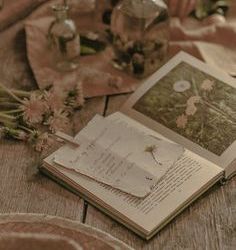

14 notes
·
View notes
Text
The Witch's Journey | Short Story by Ren
The young witch ventured into the forest, her long black hair trailing behind her like tendrils of smoke. Her eyes, as dark as the night sky, were filled with wonder and excitement. The trees towered above her, their branches reaching out to her as if to welcome her into their magical realm. She breathed in deeply, the scent of earth and moss filling her senses. The rustling of leaves and the chirping of birds filled the air, adding to the enchanting atmosphere. She closed her eyes for a moment, feeling the magic of the forest wash over her. When she opened them again, she saw a glimmer of light in the distance, beckoning her to explore further.
With a graceful step, she made her way towards the source of the light. As she drew closer, she saw that it was a clearing, bathed in the golden light of the sun filtering through the trees. In the center of the clearing was a small pool of water, shimmering like diamonds. The young witch approached the pool, and as she gazed into its depths, she saw visions of the past and the future. She saw the forest as it was before humans, filled with ancient magic and wild creatures. She saw the forest as it could be, a place of harmony and balance between nature and humanity. And she saw herself, a powerful witch, connected to the magic of the forest and the universe. With a smile on her face, she knew that this was just the beginning of her magical journey. -Ren T.


#baby witch#witch blog#witchcraft#witchbr#witch aesthetic#green witch#wiccan#creative writing#short story#writerslife#thewriteadviceforwriters#writer things#writers on tumblr#RenThatcher
14 notes
·
View notes
Text
Follow My Pinterest
New Pinterest profile!
I wanted to make sure to let my followers know that I created a Pinterest profile! I'll not only be posting pins but making mood boards and boards with resources for everyone! Go and follow it now if you'd like to see what I post.
13 notes
·
View notes
